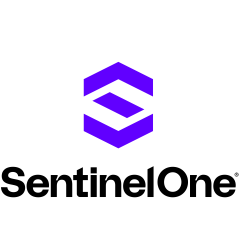What is our primary use case?
Our use cases are for client and server visibility in our enterprise and operational technology environments, as EPP and EDR solutions.
How has it helped my organization?
Traditionally, we have had an open policy on endpoints in terms of what has actually been installed. We don't really centrally manage the application. So, we have had a sort of dirty environment. Now that we have SentinelOne with its advanced capabilities, this has enabled us to detect and categorize unwanted applications. It has given us a good foothold into the area of inventory management on endpoints when it comes to our applications as well.
One of the main selling points of SentinelOne is its one-click, automatic remediation and rollback for restoring an endpoint. It is extremely effective. Everything is reduced, like cost and manpower, by having these capabilities available to us.
What is most valuable?
The Deep Visibility feature is the most useful part of the EDR platform. It gives us good insights into what is actually happening on the endpoints, e.g., when we have malicious or suspicious activity. We came from a legacy type AV previously, so we didn't have that level of visibility or understanding. For simplifying threat-hunting, it is extremely useful, where traditional techniques in threat hunting are quite laborious. We can put in indicators of compromise and it will sweep the environment for them, then they would give us a breakdown of what assets have been seen and where they have been seen, which is more of a forensics overview.
From a forensics point of view, we can see exactly what is going on with the endpoint when we have threats in progress. It also gives us the ability to react in real-time, if it has not been handled by the AI. We have set the policy to protect against unknown threats, but only alert on suspicious ones.
The Behavioral AI feature is excellent. It is one of the reasons why we selected SentinelOne. We needed a solution that was quite autonomous in its approach to dealing with threats when presented, which it has handled very well. It has allowed us to put resources into other areas, so we don't need to have someone sitting in front of a bunch of screens looking at this information.
The Behavioral AI recognizes novel and fileless attacks, responding in real-time. We have been able to detect several attacks of this nature where our previous solution was completely blind to them. This has allowed us to close gaps in other areas of our environment that we weren't previously aware had some deficiencies.
The Storyline technology is part of our response matrix, where you can see when the threat was initially detected and what processes were touched, tempered, or modified during the course of the threat. The Storyline technology's ability to auto-correlate attack events and map them to MITRE ATT&CK tactics and technique is very effective. By getting that visibility on how the attack is progressing, we can get a good idea of the objective. When we have the reference back to the framework, that is good additional threat intelligence for us.
Storyline automatically assembles a PID tree for us. It gives us a good framing of the information from a visibility standpoint, so it is not all text-based. We can get a visualization of how the threat or suspicious activity manifested itself.
The abilities of Storyline have enabled our incident response to be a lot more agile. We are able to react with a lot greater speed because we have all the information front and center.
The solution’s distributed intelligence at the endpoint is extremely effective. We have a lot of guys who are road warriors. Having that intelligence on the network to make decisions autonomously is highly valuable for us.
What needs improvement?
The role-based access is in dire need of improvement. We actually discussed this on a roadmap call and were informed that it was coming, but then it was delayed. It limits the roles that you can have in the platform, and we require several custom roles. We work with a lot of third-parties whom we rely on for some of our IT services. Part of those are an external SOC function where they are over-provisioned in the solution because there isn't anything relevant for the level of work that they do.
For how long have I used the solution?
We have used it for around 10 to 11 months.
What do I think about the stability of the solution?
In the 11 months that we have had it, we have only had one problem. That was related back to a bug on the endpoint agent. So. it is very stable when I compare it to other platforms that I have used, like McAfee, Symantec, and Cylance.
Being a SaaS service, they take care of all the maintenance on the back-end. The only thing that we have to do is lifecycle the agents when there is a new version or fixes. So, it is very minimal.
What do I think about the scalability of the solution?
It is highly scalable. It is just a case of purchasing more licensing and deploying agents.
We have three global admins, myself included, with about 10 other administrators. Primarily, the way that we are structured is we have a client team and a server team. So, we have resources from each geographical region who have access to the solution to police their own environment on a geographical basis. So, we have three global admins, then everybody else just has a sort of SoC-based level functionality, which goes back to the custom role issue because this is too much access.
How are customer service and technical support?
The technical support is very good. My only criticism is they are not very transparent when they are giving you a resolution to a problem. We have had several cases where we have had a problem that we have been given the fix for it. However, when we asked for background information on the actual problem, just to get some more clarity, it is very difficult to get that. I don't know if it's relative to protecting the information regarding the platform or a liability thing where they don't want to give out too much information. But, in my experience, most vendors when you have a problem, they are quite open in explaining what the cause of the issue was. I find SentinelOne is a bit more standoffish. We have gotten the information in the end, but it is not an easy process.
When responding to fixing a problem, they are excellent. It is any of the background information that we are after (around a particular problem) that we find it difficult to get the right information.
Which solution did I use previously and why did I switch?
We were previously using Trend Micro Deep Security. The primary reason why we switched was that it is rubbish. It is a legacy-based AV. We had a lot of problems functionality-wise. It was missing a lot of things, e.g., no EDR, no NextGen capabilities, and it had interoperability problems with our Windows platform deployments. So, there was just this big, long list of historical problems.
We specifically selected SentinelOne for its rollback feature for ransomware. When we started looking into securing a new endpoint solution about 24 months ago, there was a big uptick in ransomware attacks in the territory where I am based. This was one of the leading criteria for selecting it.
How was the initial setup?
The initial setup is extremely straightforward. The nature of the platform has been very simplistic when it comes to configuring the structure for our assets and policies. Several other platforms that I have worked with are quite complex in their nature, taking a lot of time. We were up and running within a day on the initial part of our rollout. For the whole organization, it took us about 30 days to roll out completely in five different countries across roughly 20,000 endpoints.
Behavioral AI works both with or without a network connection. We tested it several times during procurement. It can work autonomously from the network. One of our selection criteria was that we needed it to be autonomous because we have air gapped environments. Therefore, we can connect, install, or disconnect, knowing that we have an adequate level of protection. This mitigates certain risks from our organization. It also gives us good assurance that we have protection.
We had a loose implementation strategy. It was based on geography and the size of the business premises in each country. We started with our administration office, but most of our environment is operational technology, e.g., factories and manufacturing plants.
What about the implementation team?
We did the deployment ourselves, but we had representation from the vendor in the form of their security engineer (SE). We did the work, but he gave us input and advisories during the course of the deployment.
Three of us from the business and one person from Sentinel (their SE) were involved in the deployment of SentinelOne.
What was our ROI?
We saw a return of investment within the first month.
On several occasions, we found some persistent threats that we wouldn't have known were there by using the Deep Visibility feature.
The solution has reduced incident response time by easily 70 percent.
The solution has reduced mean time to repair by probably 40 to 50 percent. This has been a game changer for us.
Analyst productivity has increased by about 50 percent.
What's my experience with pricing, setup cost, and licensing?
We are on a subscription model by choice. Therefore, we are paying a premium for the flexibility. We would have huge cost savings if we committed to a three-year buy-in. So, it's more expensive than the other solutions that we were looking at, but we have the flexibility of a subscription model. I think the pricing is fair. For example, if we had a three-year tie-in SentinelOne versus Cylance or one of the others, there is not that much difference in pricing. There might be a few euro or dollars here and there, but it's negligible.
Which other solutions did I evaluate?
We evaluated:
- Microsoft Defender for Endpoint
- Cisco AMP for Endpoints
- CylancePROTECT
- Apex One, which is Trend Micro's NextGen platform.
The main differentiator between SentinelOne has been ease of use, configuration, and performance. It outperformed every single one of the other solutions by a large margin in our testing. We had a standardized approach in tests, which was uniform across the platforms. Also, there is a lot of functionality built into SentinelOne, where other vendors offered the additional functionality as paid add-ons from their basic platforms.
During our evaluation process, SentinelOne detected quite a lot of things that other solutions missed, e.g., generic malware detection. We had a test bed of 15,000 samples, and about 150 were left for SentinelOne. What was left was actually mobile device malware, so Android and iOS specific, fileless attacks, and MITRE ATT&CKs. SentinelOne performed a lot stronger than others. Cylance came second to SentinelOne, even though they were 20 percent more effective in speed and detection. The gulf was so huge compared to other solutions.
SentinelOne's EDR is a lot more comprehensive than what is offered by Cylance. They are just two different beasts. SentinelOne is a lot more user-friendly with a lot less impactful on resources. While I saw a lot of statistics from Cylance about how light it is, in reality, I don't think it is as good as the marketing. What I saw from SentinelOne is the claims that they put on paper were backed up by the product. The overall package from SentinelOne was a lot more attractive in terms of manageability, usability, and feature set; it was just a more well-rounded package.
What other advice do I have?
Give SentinelOne a chance. Traditionally, a lot of companies look at the big brand vendors and SentinelOne is making quite a good name for itself. I have actually recommended them to several other companies where I have contacts. Several of those have picked up the solution to have a look at it.
You need to know your environment and make sure it is clean and controlled. If it's clean and you have control, then you will have no problems with this product. If your environment isn't hygienic, then you will run into issues. We have had some issues, but that's nothing to do with the product. We have never been really good at securing what is installed on the endpoint, so we get a lot of false positives. Give it a chance, as it's a good platform.
I would give the platform and company, with the support, a strong eight or nine out of 10.
Disclosure: PeerSpot contacted the reviewer to collect the review and to validate authenticity. The reviewer was referred by the vendor, but the review is not subject to editing or approval by the vendor.



















On behalf of the entire SentinelOne team, thank you for your extensive and thoughtful review, RS. It is rewarding to hear how customers derive value from our endpoint protection and EDR, whether for user endpoint, Linux VMs, or Kubernetes-managed container clusters. Cheers.